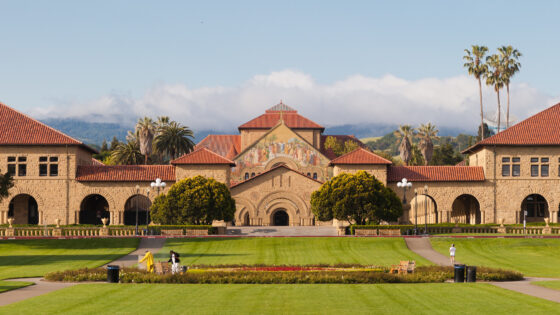It is common knowledge that Hitler’s professors (the title of Max Weinreich’s famous book of 1946) were the first to make antisemitism both academically respectable and complicit in murder.[1] Stephen Norwood’s The Third Reich in the Ivory Tower massively demonstrates how these professors and the universities and genocidal regime they served were themselves made respectable in America during the Nazi regime’s formative years by the faculty and administrators of major American universities and colleges, among them Harvard, Columbia, Chicago, and the Seven Sisters women’s colleges. They played a major role in legitimizing the Nazi regime: negatively, by refusing to take a stand against it and positively, by welcoming Nazi officials to their campuses and participating enthusiastically in student exchange programs with German institutions that had become part of the New Order. Norwood describes how, at the very time when many groups in America were, starting in 1933, demonstrating in the streets against the Hitler regime and boycotting its products, universities (widely, if mistakenly, assumed to be the home of the highly instructed–especially where Europe was the subject–and morally sensitive) were doing business as usual, refusing to attend, much less organize, anti-Nazi protests. When Robert Hutchins, president of the University of Chicago, was reproached for sailing across the Atlantic on a German ship flying the Nazi flag, he couldn’t see what all the fuss was about and continued to make his frequent trans-Atlantic voyages on the Europa. (During the years from 1933-38, Hutchins’ university hired a grand total of ten German-Jewish refugee professors.)
Harvard’s special contribution to making the antisemitic policies and actions of the Third Reich respectable among America’s learned classes came mainly in its pattern of inviting prominent Nazis to lecture and receive honors in Cambridge. Harvard president James Conant invited and warmly welcomed Ernst Hanfstaengl, a Nazi leader and close friend (also look alike)of Hitler, to attend his class’s 25th reunion at the Harvard commencement of June 1934. One of the book’s striking photos shows this worthy demonstrating the Hitler salute while standing in the reception line; apparently he had developed it during his cheerleader days back in 1909. Harvard was not lacking in its own, homegrown Nazis either: German professor John Walz was a speaker at Nazi rallies in Boston. (Those who think that the Modern Language Association sank to its lowest point when MIT professor Louis Kampf assumed its presidency in 1972 or Edward Said in 1999, should keep in mind that Walz became president of this dominant organization of scholars of literature and language long before.) So deeply entrenched was the belief that it was acceptable, indeed laudable, to welcome and honor spokesmen for the Nazi regime, that university presidents reacted with fury against those who thought and publicly said otherwise. At Harvard, for example, seven protestors of Hanfstaengl’s presence in Harvard Square were arrested for speaking without a permit and incarcerated for six months with hard labor. When Columbia president Nicholas Murray Butler sent a professorial delegate to Heidelberg’s 550th anniversary celebration (a Nazi propaganda festival at which Josef Goebbels officially received the delegates) a student named Robert Burke publicly criticized Butler, and was summarily forbidden to register for further classes at the college. He was being expelled for” deliver[ing] a speech in which he referred to the President disrespectfully” and was brazenly contemptuous of “good manners” and “good taste” in his language. (Columbia, located in New York City, had more trouble than Harvard with student opposition to antisemitism because, despite its quota system, it had a large body of Jewish students. At Harvard, student opinion (for example in the Harvard Crimson newspaper, was decidedly welcoming to spokesmen for the new Germany.) The frequency with which good manners were invoked by these university presidents as a reason for welcoming Nazi spokesmen and cracking down on obstreperous Jews who objected to their presence raises the question of whether these academics were themselves motivated by a kind of anti-Semitism. Bernard Harrison, author of the indispensable book, The Resurgence of Antisemitism, (2006), distinguishes between social and political antisemitism; the former is a prejudice that would exclude Jews from country clubs or even certain professions; the latter, far more lethal, is a prejudice of panic, which views Jews as an absolutely depraved people, whose aim is world domination, and who pursue that aim by incessant destructive activity aimed at the control of non-Jewish societies and destabilization of the world order. The latter, of course, was the type officially espoused by the Nazi regime. Most of the American university officials whose egregious actions and statements Norwood abundantly cites were social anti-Semites. But by no means all. Take, for example, Dean Virginia Gildersleeve of Barnard College in the Thirties. She found time, amidst her efforts to reduce the number of Jews at Barnard, to wage a decades-long campaign against “International Zionism,” the “Zionist control of the media of communication” in the U.S., politicians’ fear of the “Jewish vote” (which led them to “bully” Arabs into letting “alien foreigners” into Palestine). In other words, she was a forerunner of such contemporary peddlers of Jewish conspiracy theory as Walt and Mearsheimer, Noam Chomsky, and David Duke. (Within the book itself, Norwood refrains from linking the university-based antisemitism of the thirties with that of today, Harvard’s invitation to Hanfstaengl with Columbia’s recent invitation to Ahmadinejad or to the countless instances of Judeophobia now emanating from the left rather than the right.) Perhaps the most poignant existential realization that Norwood gives of the American ivory tower’s immoral thoughtlessness where Naziantisemitism was concerned when it opened its welcoming arms to Nazis was the University of Chicago’s long, loving relationship with Mircea Eliade. Eliade had been a loyal servant of, and propaganda attaché for, the Nazi government of Rumania from 1940-45, an ardent supporter of the Iron Guard, whose barbaric massacres of Jews, acts that would have shamed animals, shocked even the Germans. Immigrating to the United States after the war, he became a celebrated scholar of comparative religion. He was hired by Chicago in1956 and became chairman of its Department of the History of Religion. When his visa expired, the university persuaded the State Department to grant him a special waiver allowing him to stay here forever because his work in Chicago was “indispensable to the security and welfare of the United States.” In 1981 Chicago’s president Hannah Gray congratulated him on publication of the first volume of his autobiography: “You have had a fascinating life, and I’m delighted that you’ve put it down to inform and instruct all of us. It’s a wonderful story.” The only Chicago-based dissenter from this orgy of oily sycophancy was Saul Bellow, the protagonist of whose novel, Ravelstein, says of one Grielescu (based onEliade): “Grielescu is making use of you. In the old country he was afascist. He needs to live that down. The man was a Hitlerite. Do you have any memory of the massacre in Bucharest when they hung people alive on meathooks in the slaughterhouse and skinned them alive? Just give a thought now and then to those people on the meat hooks.” And just what is the lesson Eliade’s “wonderful story” and others like it in this book teach us? It is that knowledge is one thing, virtue another. If you expect moral nourishment from professors, you should try getting warmth from the moon.
Edward Alexander’s most recent book is Lionel Trilling and Irving Howe: A Literary Friendship (Transaction Publishers).
[1] Editor’s note: Yale University Press published a second edition of this title in 1999 with an introduction by Sir Martin Gilbert, ISBN: 9780300053876.






